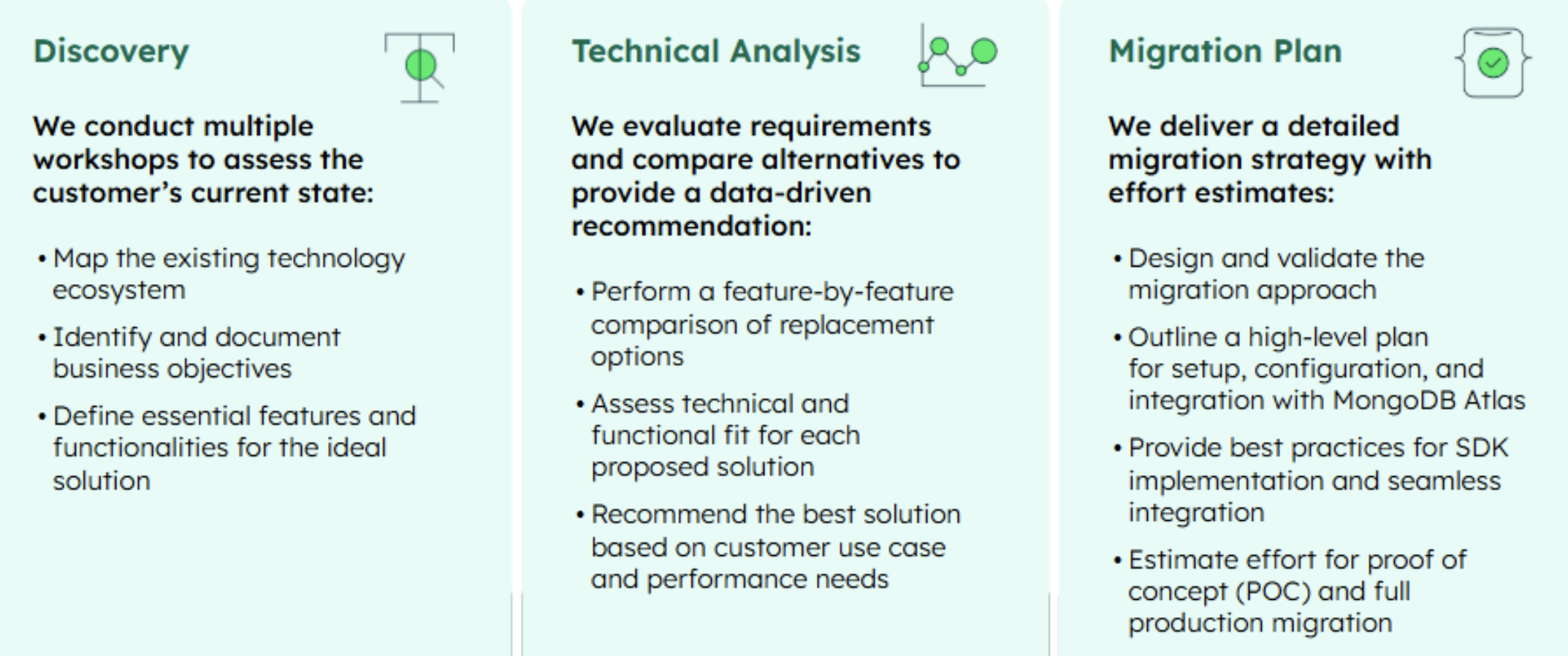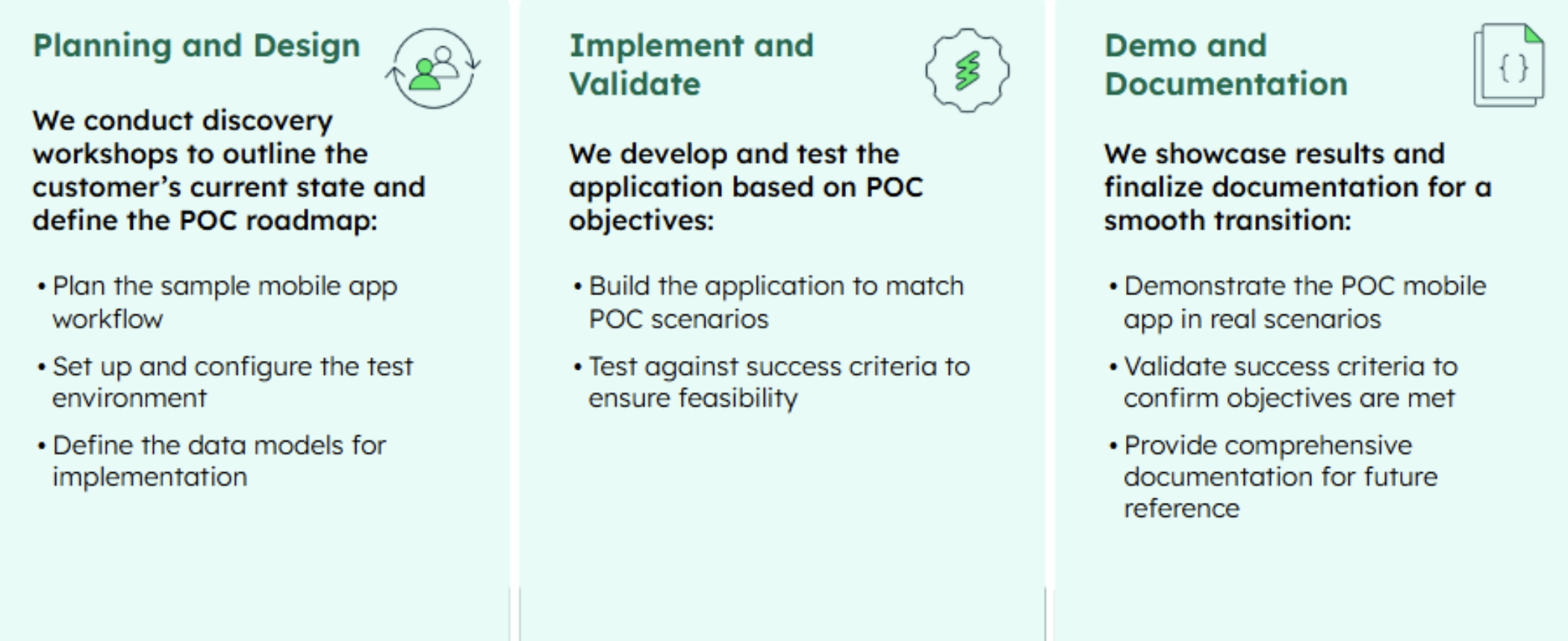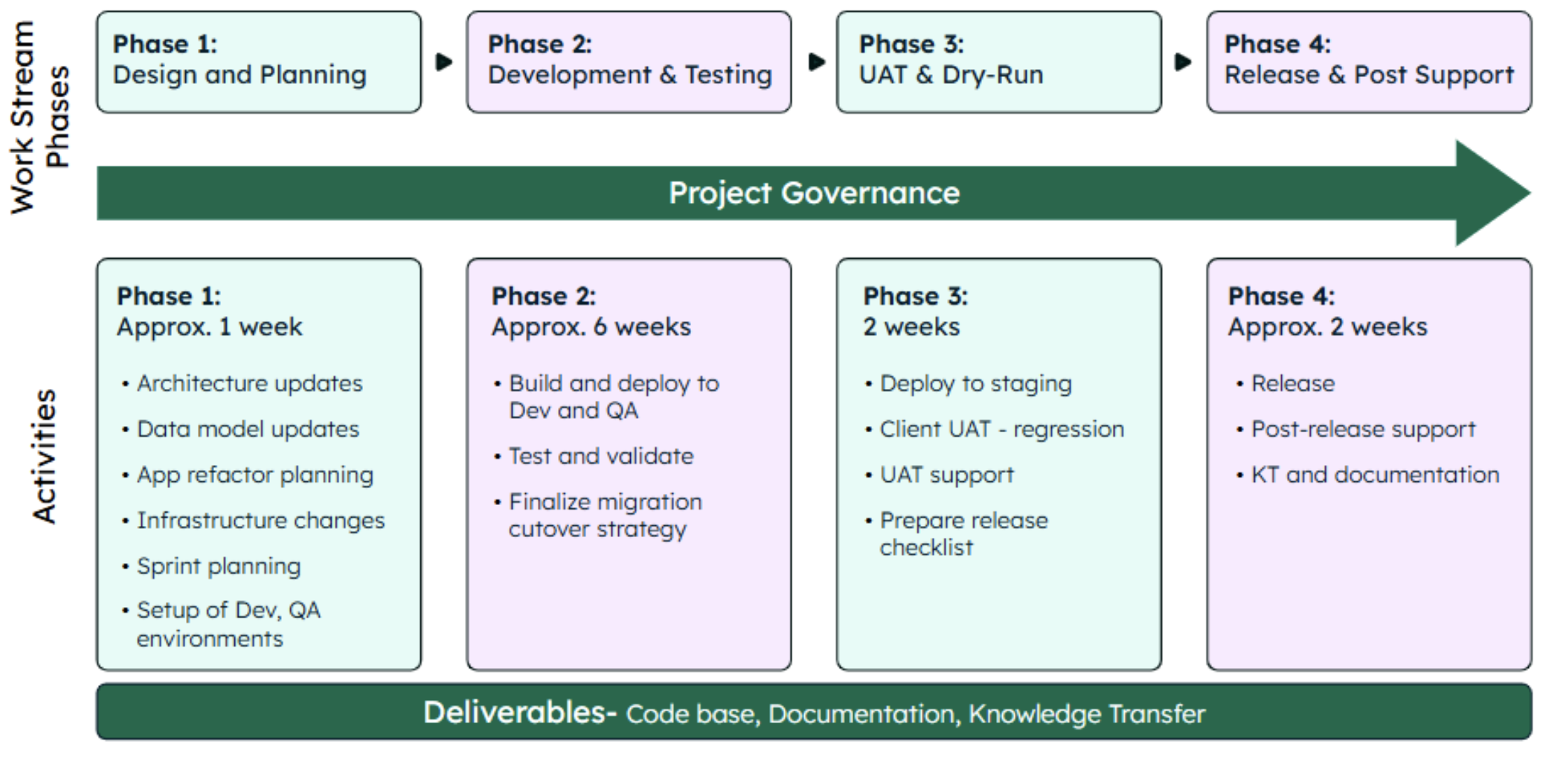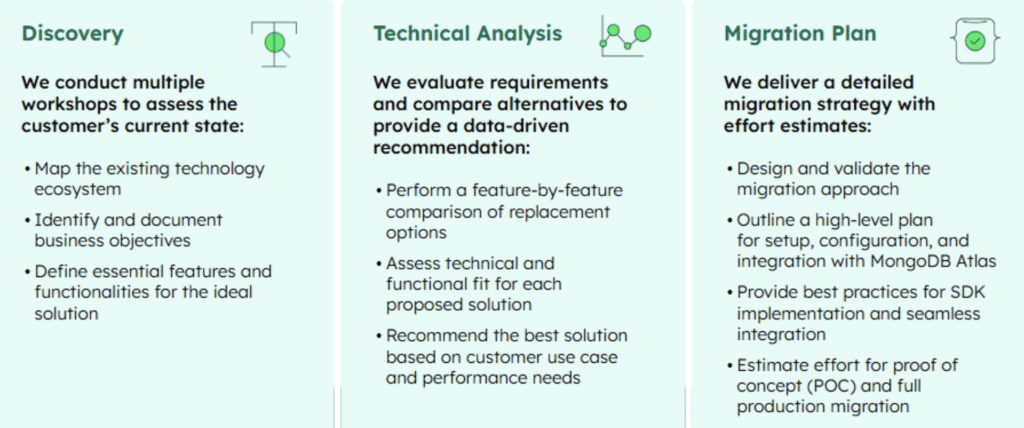We build where it matters most—filling capability gaps and evolving alongside our customers. When ecosystem partners offer strong solutions, we listen and adjust. As part of this focus, MongoDB will phase out Atlas Device Sync (ADS) by September 30, 2025. This shift allows us to double down on what we do best: delivering a secure, high-performance database platform that supports the next generation of modern applications.
Together, MongoDB and WeKan will help organizations navigate this transition seamlessly, offering structured guidance to ensure a smooth migration to advanced, future-proof solutions.
This is an opportunity for organizations to future-proof their applications, maintain operational excellence, and adopt cutting-edge technology for the next generation of business needs.
Navigating next steps: Choosing the right path with WeKan
WeKan is a leading application modernization consultancy, and since YEAR has been MongoDB’s trusted partner for mobile and IOT. WeKan’s team of expert MongoDB engineers have supported complex Realm and Atlas Device Sync implementations for some of MongoDB’s largest enterprise customers.
Today, WeKan is actively guiding organizations through the Realm end-of-life transition—helping them assess, validate, and migrate to alternative technologies like Ditto, PowerSync, ObjectBox, and HiveMQ, among others. In many cases, WeKan also supports customers in building custom sync solutions tailored to their unique needs.
“MongoDB strategically invested in WeKan for their deep expertise in complex Edge and Mobile environments,” said Andrew Davidson, Senior Vice President of Products at MongoDB. “Since MongoDB’s acquisition of Realm in 2019, WeKan has played a pivotal role in modernizing mobile and IoT workloads for some of our largest enterprise customers using Atlas Device Sync and Realm. As ADS approaches end-of-life, the specialized knowledge they’ve developed positions them as the ideal partner to support customers in their migration to alternative sync solutions.”
Here’s how WeKan supports and streamlines organizations’ transition from Realm and ADS. They provide services in the following areas:
-
Assessment and consultancy
-
Proof-of-concept development
-
Structured migration plan
-
Technical support and training
Let’s dive into each area!
Assessment and consultancy
A successful migration begins with a deep understanding of the current application landscape. WeKan’s experts conduct a two-week assessment—involving discovery workshops and technical deep dives—to evaluate dependencies, security, performance, scalability, and an organization’s future needs. The result is a customized migration roadmap with recommended solutions, architecture diagrams, and a strategy aligned with business goals.

Proof-of-concept service
To ensure the migration strategy, WeKan provides a structured proof-of-concept (POC) service. This phase allows businesses to test solutions like PowerSync or Ditto against success criteria by building a sample mobile app that simulates the new environment.
Through planning, implementation, testing, and documentation, WeKan assesses performance, integration, and feasibility—enabling informed decisions before proceeding with the full-scale migration.

Structured migration plan
Once the assessment and POC phases are complete, WeKan executes a structured migration plan designed to minimize disruptions.
The migration process is broken into key phases, including integrating new SDKs, optimizing data models, transitioning queries, and deploying a pilot before a full rollout. WeKan ensures that all code changes, data migrations, security configurations, and performance optimizations are handled efficiently, enabling a seamless transition with minimal downtime.

Technical support and training
Post-migration support is essential for a smooth transition, and WeKan provides dedicated technical assistance, training, and documentation to ensure teams can effectively manage and optimize their new systems.
This support includes hands-on guidance for development teams, troubleshooting assistance, and best practices for maintaining the new infrastructure. With ongoing support, businesses can confidently adapt to their upgraded environment while maximizing the benefits of the migration.
Start your migration journey with confidence
As Atlas Device Sync approaches end-of-life, now is the time to act. WeKan brings deep expertise and a structured migration approach to help you transition seamlessly—whether you choose Ditto, PowerSync, or another alternative.
This is more than a technology shift. It’s an opportunity to embrace digital transformation and build a future-ready, high-performance infrastructure that evolves with your business needs.
Partner with WeKan and MongoDB to ensure a smooth, expert-led migration from legacy sync solutions. With proven methodologies and deep technical know-how, WeKan minimizes disruption while maximizing long-term impact.
Learn how WeKan can simplify your migration and set you up for scalable success.
Let’s future-proof your digital foundation—together. Contact us today!
Boost your MongoDB Atlas skills today through our Atlas Learning Hub!
Source: Read More
